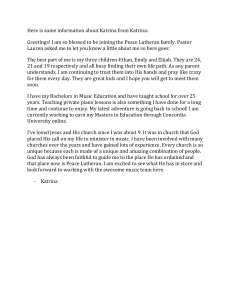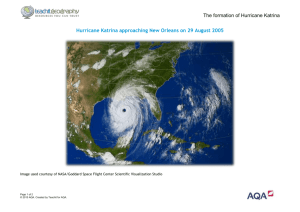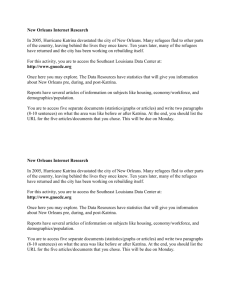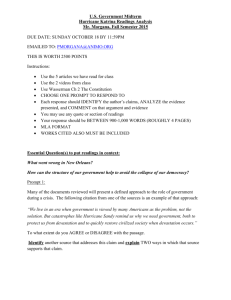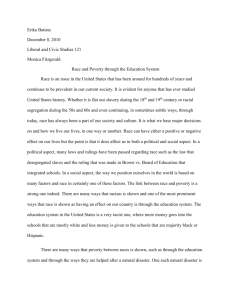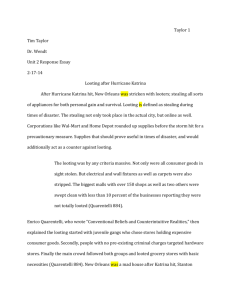Katrina Assignment
advertisement
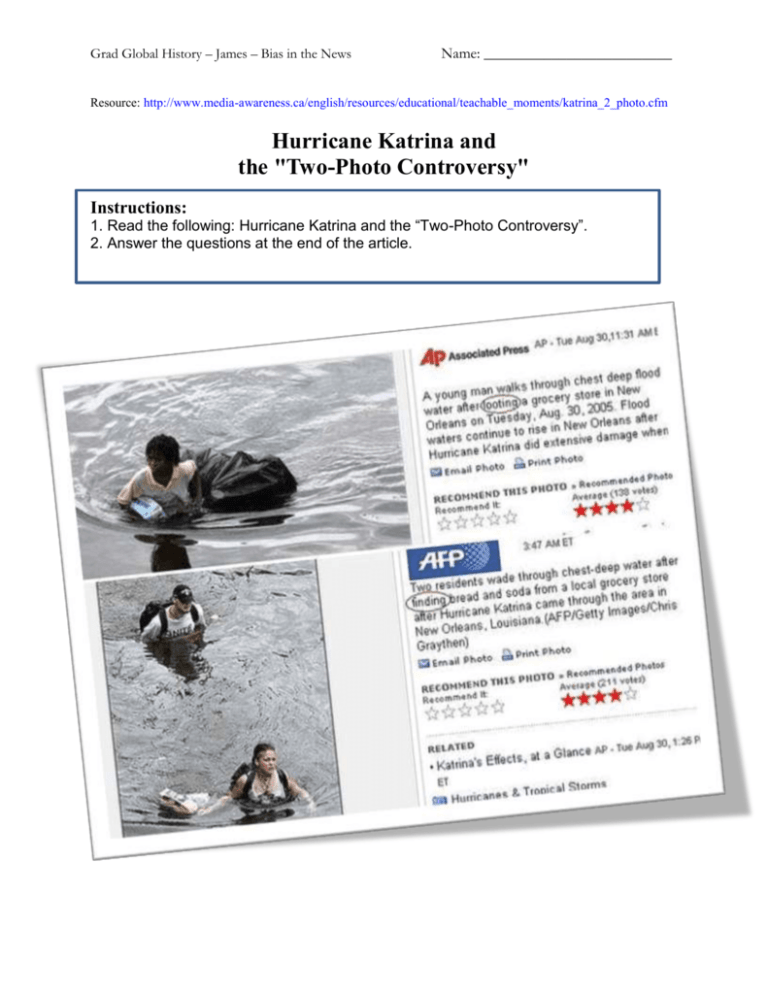
Grad Global History – James – Bias in the News Name: _________________________ Resource: http://www.media-awareness.ca/english/resources/educational/teachable_moments/katrina_2_photo.cfm Hurricane Katrina and the "Two-Photo Controversy" Instructions: 1. Read the following: Hurricane Katrina and the “Two-Photo Controversy”. 2. Answer the questions at the end of the article. Grad Global History – James – Bias in the News Name: _________________________ After Hurricane Katrina struck New Orleans, two photographs published by Yahoo! News depicting residents making their way through chest-deep water caused an uproar relating to bias in media coverage. The first image, shot by photographer Dave Martin for the Associated Press, showed a young black man, who, according to the accompanying caption, “walks through chest deep flood water after looting a grocery store.” In a similar shot, taken by photographer Chris Graythen for AFP/Getty Images, a white couple was shown wading "through chest-deep water after finding bread and soda from a local grocery store.” It is Yahoo!’s policy to use photo captions that are provided by the photographers and not edit them before posting the images online.1 These captions caused many to question whether black people were being treated fairly in media coverage of post-hurricane events. In response to the ensuing controversy, the journalists associated with the photos claimed that it was not an issue of race, but rather a question of semantics over the terms ‘looting’ as opposed to ‘finding’. According to Jack Stokes, the director of media relations for AP, Dave Martin, the photographer of the first picture, personally witnessed the subject of his photograph entering a grocery store and leaving with items, thus witnessing the man looting.2 Whereas the photographer of the second photo, Chris Graythen, didn’t witness the subjects of his photograph taking the goods. “I wrote the caption about the two people who 'found' the items. I believed in my opinion, that they did simply find them, and not 'looted' them in the definition of the word. The people were swimming in chest deep water, and there were other people in the water, both white and black. I looked for the best picture. There were a million items floating in the water — we were right near a grocery store that had 5+ feet of water in it. It had no doors. The water was moving, and the stuff was floating away. These people were not ducking into a store and busting down windows to get electronics. They picked up bread and cokes that were floating in the water. They would have floated away anyhow.”3 Questions: 1. What type of bias is represented in this news article? 2. Compare the words “looting” and “finding”. What images come to mind when we hear or use these words? 3. What is the job or role of a news journalist? How might a traumatic event make their job difficult? Grad Global History – James – Bias in the News Name: _________________________ 4. What are some reasons that journalists or news websites might publish incorrect stories? 5. Can you think of any other examples (they can be local to Halifax) in which bias has occurred in media coverage? 6. Compare the following two post-hurricane photos. In light of the two photos previously discussed what comments would you make about these pictures and their accompanying captions. Looters hit a drug store in the French Quarter district of New Orleans in New Orleans, Louisiana, following Hurricane Katrina. Fresh floods, fires and looting rode in the destructive wake of Hurricane Katrina, deepening a humanitarian crisis that left hundreds feared dead and sections of New Orleans submerged to the rooftops. (AFP/James Nielson) As one person looks through their shopping bag, left, another jumps through a broken window, while leaving a convenience store on the I-10 service road south, in Metairie, La., Tuesday, Aug. 30, 2005, in the aftermath of Hurricane Katrina. This photo was taken during a helicopter tour of the area that included the governor of Louisiana. (AP Photo/Bill Feig, Pool)




